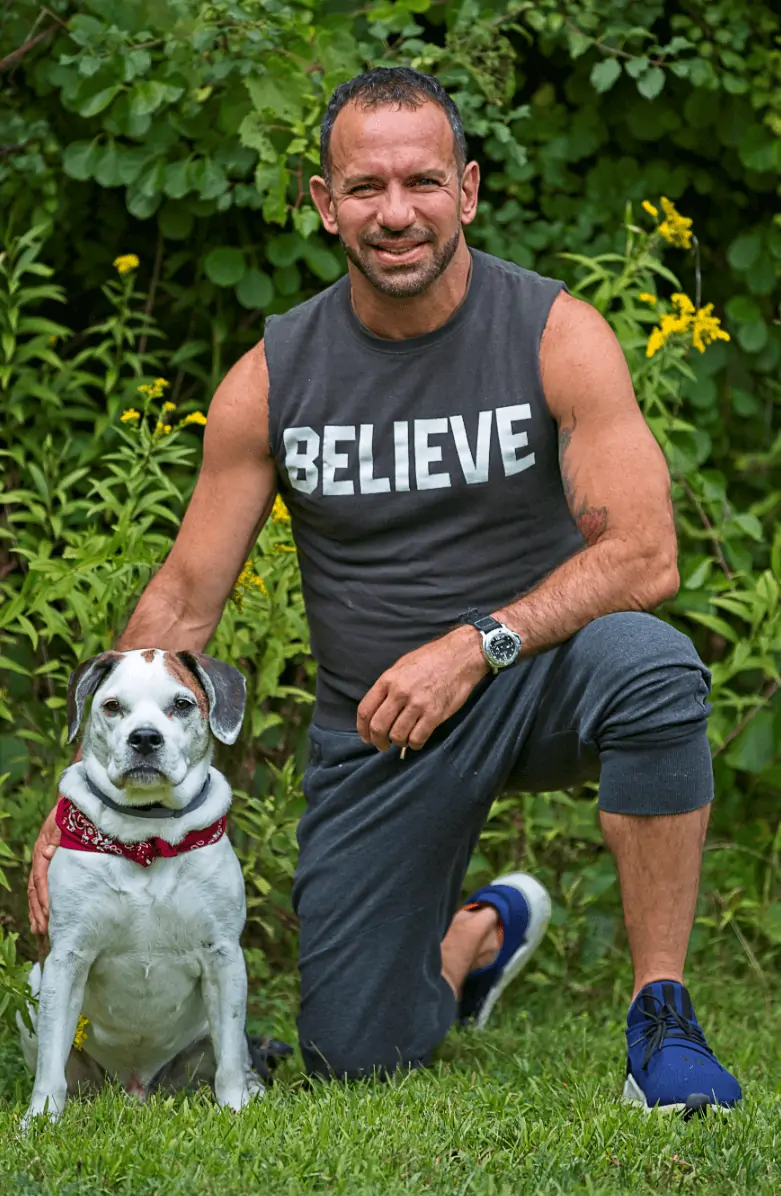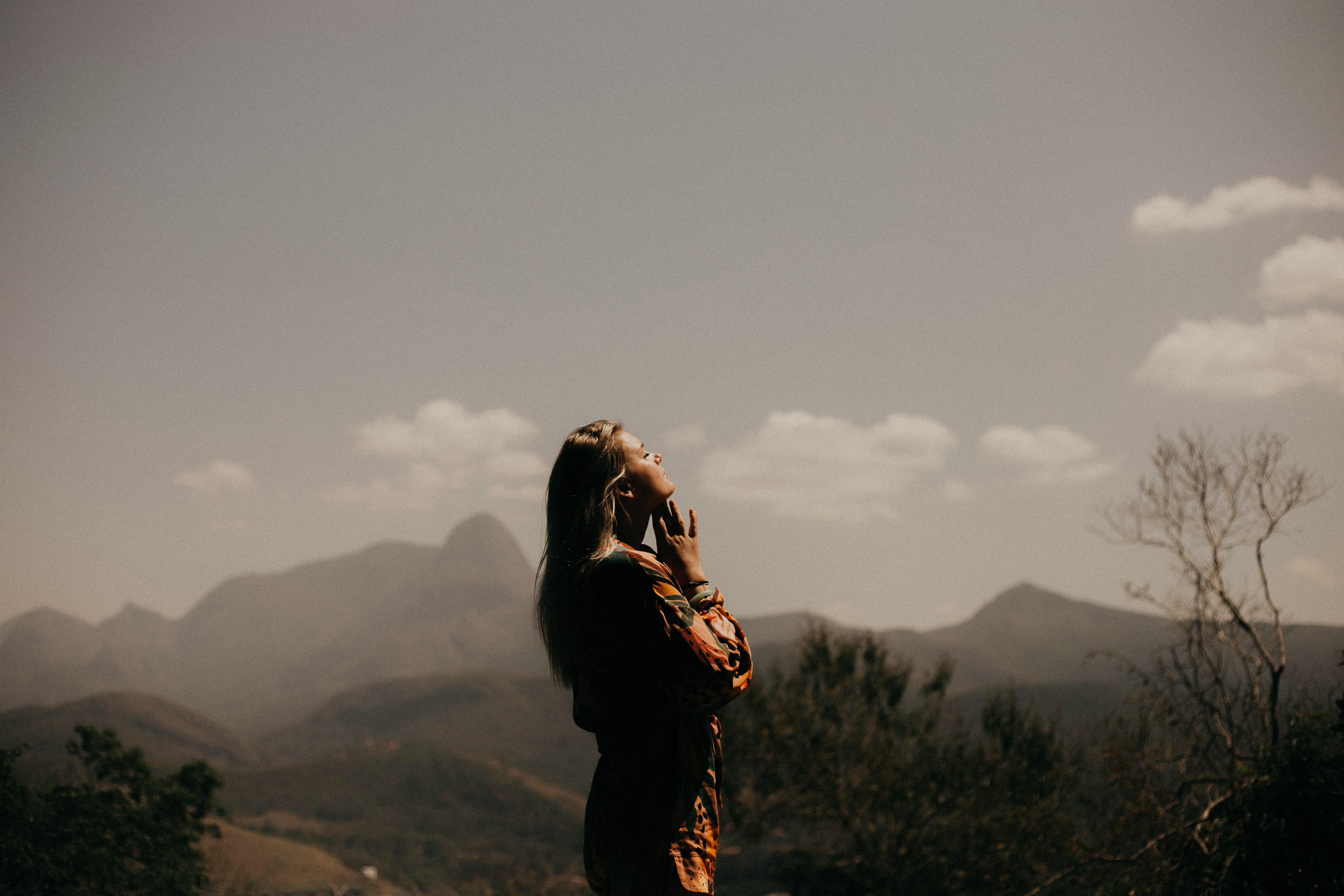Transcript:
I’m Leandro Carvalho, and I was born in Brazil in 1968. I grew up in Brazil, and I was born in a family that was very loving, very caring, very close to each other. I have three gay brothers and one lesbian sister. So, it’s a very special, different kind of family, you know? I grew up there. I went to school there. I did my college in physical education and health studies. I also worked some time there.
I was a dancer since age 12. At age 16, I started dancing for a classical ballet company, so I was already a professional dancer. And then, I went to teach dance. When I was in school, I got a part-time job at the physical education school in Brazil. I got a part-time job to teach aerobics, high-impact aerobics, step aerobics. It was, you know, the late 80’s, and it was so “in.” I did very well because I was a ballet dancer — I had the rhythm, I had the musicality, and I had a lot of energy. That was naturally in me.
Eventually, I moved to New York City. I arrived in New York City with my luggage, and I had no idea where I was going to go. The only thing I knew was that I had to go to dancing school because I started [classes] today.
And it was great. I was about to finish, and in the second year of my master’s degree, I went through a very tough moment in my life. You know, things got very difficult, and very hard. It was in September that my brother was diagnosed with HIV. And this was a time when there was no medication. He was almost 30 years old, and I was 27. I was far away, and he got sick. But the thing is that things progressed very quickly because he was already in a really bad situation. Nobody knew very much about HIV. So, he went to the hospital and he never left, you know? He only stayed for two months. After two months, he passed away.
He was so dear to me. He was my brother that was two years older than me. We got along very well. We had a lot of things in common.
My father and my mother, [they] were very concerned, and they asked us to do the test.
I took the test and I was HIV positive. And that was a very tough moment. I had just lost my brother. I was alone in New York City. I didn’t know who to reach [out to]. I didn’t reach [out] to anyone. I kept to myself.
It was a very, very tough moment for me. I saw myself dying already. When I looked in the mirror, I didn’t see myself. I saw the appearance of someone who was dying of AIDS.
I started treatment, and eventually, they came out with the cocktail, and things got a little better. I used to take about 30 pills a day, every day. I started getting strong. I was going to every resource and study to figure out what I could do. It was overwhelming because they didn’t know what was going on. I would take every tip: You cannot drink coffee. You cannot drink wine. You cannot do this, and you cannot do that. I stopped everything. I think that overwhelmed me. [It was] too much to do. My health was going down. And, I got sick, I was hospitalized three to four times that year.
But I kept working. I kept trying. I was always very driven to work. I had all these amazing opportunities, and I worked in many places.
Eventually, I made a lot of friends in New York City, and I went to a party. I met Alessandra Ambrosio, who is a supermodel, a Victoria’s Secret supermodel. And I started training her. I was already training celebrities in Hollywood, Los Angeles, and Malibu. But when I started training her, I met a lot of supermodels through her.
So, I put together a workout especially for Alessandra — and then eventually for all of the models — that I called Brazil Butt Lift. I put the Brazil Butt Lift program at Equinox, and it was a big hit. I was in a lot of press and on TV. I was getting a lot of press for Equinox [too]. They asked me to be an Equinox teacher and drop all of the other gyms. They made me an offer to be exclusive for Equinox. So, I dropped all the other gyms and became an Equinox teacher. I was teaching like 28 models from all over the world, and that gave me the opportunity to be in a lot of press.
I also, on the side, opened my gym when I was 35.
Eventually, when I was about 45, the doctor said I had to go back to the hospital and do a laser procedure. It was very simple. It would be three hours in and out, rest for the day, and then go back to work. I said, “Let’s do it. I have to do it. It’s bothering me. I cannot work with the pain and it could get worse.” So, I just went. I went to the hospital. It was very casual. I didn’t tell anybody. I woke up 24 hours later and the doctor spoke to me, and he said, “We are really sorry, but we made a mistake in the surgery. When we were doing the laser procedure, we cut your dura membrane.”
I had been through some pain, but never that way. I couldn’t sleep. I had [so much] pain that I screamed day and night. Also, I was told, “You’re never going to be able to work in fitness again. You’re never going to be able to do yoga. You have to give up everything. Call your boss, and you know, change your life.”
My mom passed away that year, and I had a relationship that ended very badly. The relationship was like, really, really bad. And that took a lot out of me.
You know, I was very close to my mom. And all this energy and grieving and not working – I just got lost. I didn’t know what to do, and I didn’t know how to cope with myself. So, I ended up throwing some drugs in the mix, which didn’t help at all. [It] just made me feel worse.
I used meth, and the meth was very powerful. It took me over, and kind of won me over. And I didn’t know I was a drug addict. I didn’t know that I had depression.
I was lost. I didn’t know what to do. I didn’t know where to go. I didn’t know what else I could do. I had a lot of blessings. I had so much to look forward to, but I didn’t look at it that way. I just focused on the negative. The drugs were covering up the other stuff. Then I got worse. I closed [my gym]. I stayed home for a month. Then things got bad.
So, I wasn’t asking for help. I didn’t know how to ask for help. I was always the one helping people, and I didn’t know how to ask. I was embarrassed. I was ashamed. I was a fitness guru. How could I ask for help? I was embarrassed by my story. But eventually, help showed up. Not long after. A month after I closed the gym, a friend of mine, gave me the opportunity. She said, “What’s going on? You look like you’re losing weight. You look depressed. You seem disconnected. What can I do to help?” So, I said, “You wanna know?” and she said “Yes.” So, I said, “I’m doing meth.” And then, she helped me to get to Mountainside.
Two days later, I came to Mountainside. I came to treatment. I came, and I was broken. I was embarrassed to come. It was hard to make that decision, but the only thing I remember on the car driving on the way here — I don’t remember much — the thing I remember was saying, “I’m going to do everything they say.”
The first thing I started feeling was hope that I had something back. It is just so amazing to me that once again, I have another blessing in my life because now I’m here. A year later, I work at Mountainside. I do all the classes, I teach yoga, meditation. I do all of the fitness classes, hiking, art, and music.
It is a great thing to have a full-time job that allows me to help people and share my experience. I think it’s great that I have my history because it’s my story that made me who I am today.
I’m pretty open to the clients. I tell them my story; they know about everything. I make sure to tell them that even though I’m the facilitator, I still have the same issues of addiction. Because when I have a day off, and I leave Mountainside and I go to NYC or any other place, and I have 2 or 3 days off, if I don’t make the right decision, then I’m back to day zero. So, we are no different. We are at different stages — they’re in detox, I’ve already been there — but we have the same issues, and we have to take care of the same thing.
What did it for me is that I changed my life and [decided to] just go with the flow and stop swimming against the current. I trust and believe in the universe. I do my work, get up early, do my routine, do my meditation, and have a great day. [You need to] be optimistic, be smiling, be happy. You know, set the tone for your day. Believe it, don’t worry so much about the future. That is my story.
It’s all about feeling good. Because when you are feeling good, you can go and reach anything you want. When you are not feeling good or [you’re] depressed, everything gets stagnant. Everything stops, and it does not move. When you are feeling good and happy, you have things to look forward to like the next day. So, today, even when you have crap to go thought, it’s easier because you have something that motivates you about your future, about tomorrow. So, that is my experience. That is what recovery has been for me. And having a chance to help other people is priceless.
If you or a loved one is struggling with addiction, Mountainside can help.
Click here or call (888) 833-4676 to speak with one of our addiction treatment experts.

 By
By 







